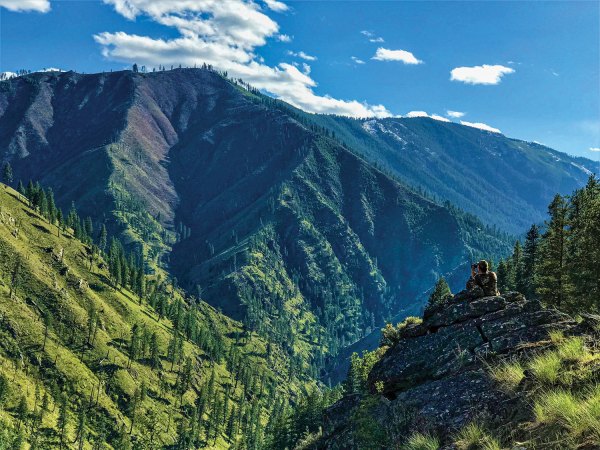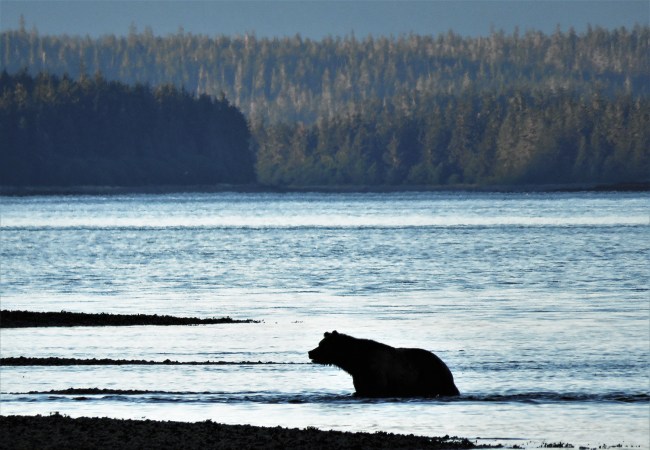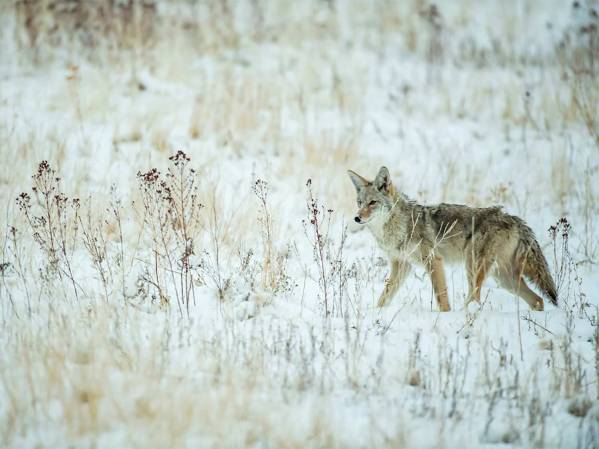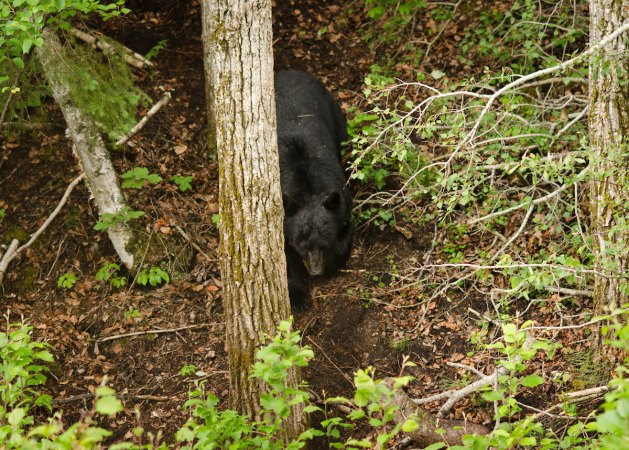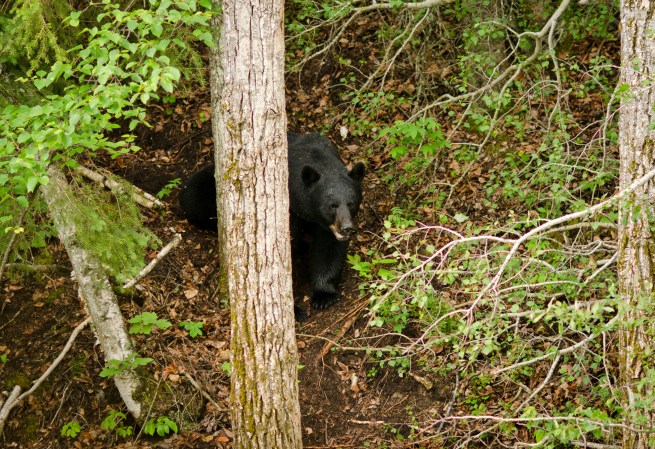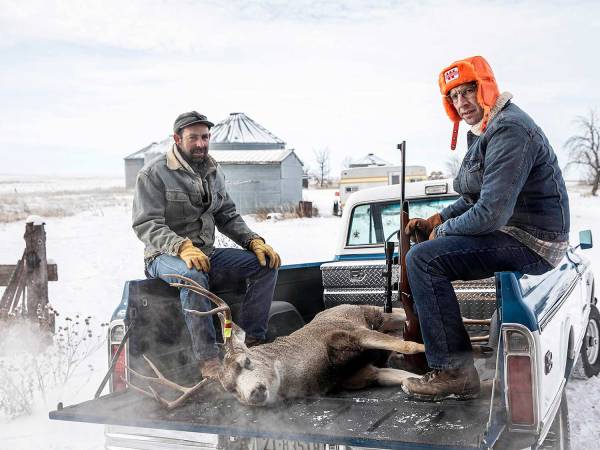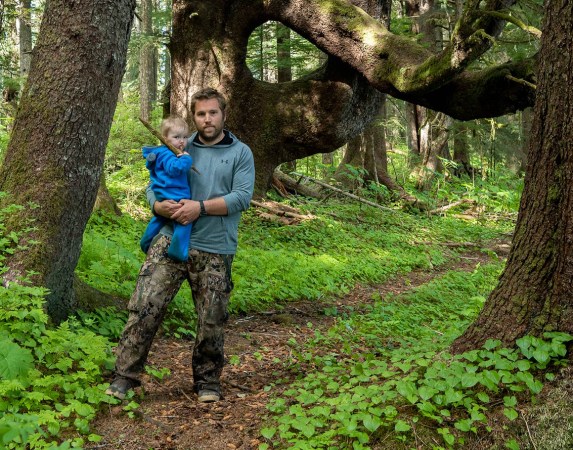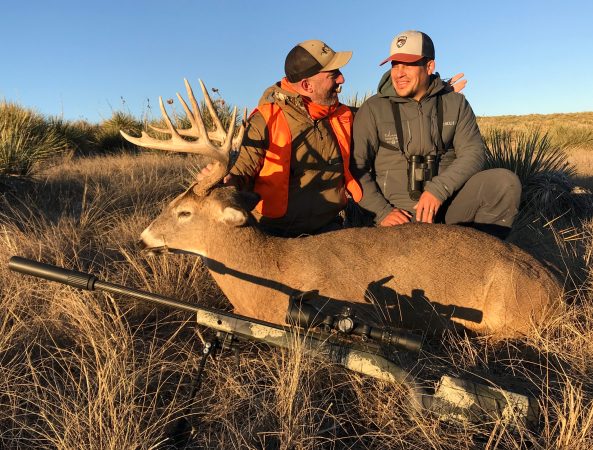I kept pressure on the throttle as my 16-foot riveted jet boat pounded through swells that were building up against the wind on a 2-mile straightaway. If I let off, each successive wave impact was significant enough to rattle it loose, and I’d lose power. I quartered the flat-bottom into the waves that had been like glass only an hour earlier to keep them from breaking over the bow. The waves built along with my anticipation as I hurried toward the small slough where I was heading to sit on a bear bait. I’d been waiting two years to return and hunt this spot, and had no idea what to expect.
If there is a single, universal challenge of hunting in Alaska, it is logistics. So much of Alaska is vast, remote wilderness that just getting there is an ordeal. What we consider “easy access” or “close to home” is usually hours away. Alaska has some of the most amazing hunting opportunities in the world, but they rarely come easily, and this particular spring bear expedition was no exception. We had only been able to pull this trip off on one out of three attempts over the years due to weather, water levels, and mechanical issues. Although there was still much to learn about the area, we had gotten a taste of its incredible potential two years earlier. There was an insane amount of bear activity, and we would do anything to experience it.
Are They on the Bait?
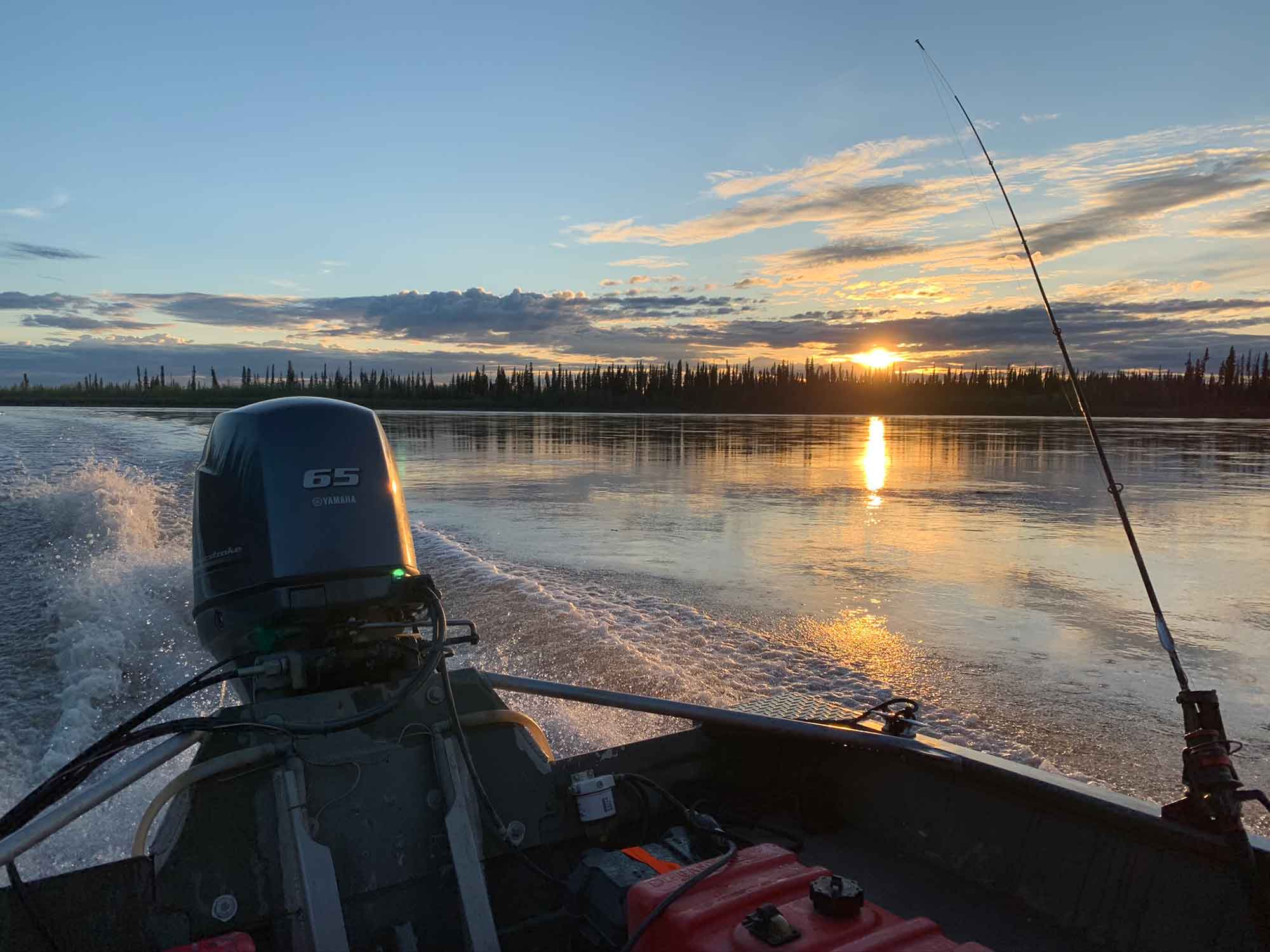
Our plan wasn’t complicated, but it was reliant on several things falling into place. We wanted to set bear baits in a very remote, swampy area, known to have out-of-control bear populations and a liberal bag limit. As soon as the spring river ice flushed out, we would take our boats, haul in bait, and set up the bait stations. A week or so later, we returned to hunt for a few days, then clean up the baits. Timing is everything, and after the ice broke and water levels dropped a little, we set off with as much as our boats could carry, hoping there was enough bait and fuel to make this work. We spent three days getting everything set and could only hope that our return trip went smoothly. There was plenty of bear activity, but timing was a gamble. It can sometimes take weeks for bears to find bait, and some baits will never attract a bear. We had to try and give the new baits enough time to become active, but not so much time that the bears would eat all the food and leave. With such a high density of bears in the area, hopefully they would get on baits quickly.
About a week later, our rag-tag flotilla hit the water again, this time with hunting gear and a few hundred gallons of fuel. There were five of us in three boats, and we were on the river at 8 a.m. By mid-afternoon, our group reached the campsite, a high gravel bar, littered with piles of driftwood. My dad and friend Terry had peeled off to check three of our six bait sites on the way to camp and were both excited but had a sense of uncertainty as they told us that one had not been touched, and two were empty. There were also holes dug into the ground where the bait had been. It had only been a week, so surely the bears hadn’t been gone for long. But would they come back? Had we waited too long, and would our months of planning be for nothing?
As evening approached, my friends Frank, Rob, and I fueled up the boats to check the remaining three baits, hoping to find enough activity to hunt. There was almost certainly going to be bear activity, but the tension of not knowing hung in the air like the smoke from a rich-running two-stroke outboard. Our anxiety was somewhat relieved as we pulled up to the bank at the first site and saw that there were trails beat down right to the edge of the slowly drifting, brackish water. There was only a hole in the dirt where we had left nearly 200 pounds of bait. We added more bait, covered it with logs, and moved on. Our anticipation grew as we climbed the tall riverbank at the next spot, only to see that it had not been touched, despite the foot-deep game trail that it was set next to.
I was getting nervous. We were far enough from camp that if our last bait was untouched, we might have to draw straws to see who got to hunt. I breathed a sigh of relief when the next bait had been demolished, stripped down to the dirt. We added bait and I shoved off in my boat and made my way back to the first site as Frank and Rob hung their treestands,
It was hard for me not to run the throttle wide open heading back to set up. It was still early as I nosed the boat into the bank, but I felt the anxious, disheveled sensation of being late and unprepared. I didn’t like the extra noise and movement of hauling in and setting up my treestand, but with such a low amount of hunting pressure in this area, it wouldn’t make a difference. The non-stop momentum of the day that started at 3 a.m. began to slow as I climbed the tree and sat in the warm evening sun. Within 15 minutes, I felt my eyes droop and realized I needed to put my safety harness on. But I had forgotten it back at the boat and had to make a quick return trip. Begrudgingly, I made the walk out to the boat and safely tied myself into the tree for the evening.
The First Encounter
This was anything but the efficiency with which I usually prefer to start a hunt. But the clumsy anxiousness I felt began to drift away as I slowly tuned into the sounds of the woods. Typically, in interior Alaska, the witching hour for black bear activity is between 10:30 p.m. and midnight, with the sun only setting for a few minutes of dusk at around 2:30 a.m. in early June. With so much recent bear activity though, it didn’t surprise me to hear a twig snap at around 9:30 p.m. A jet-black bear came in, slinking out of a sea of impenetrable brush. It looked to be a sow, although with a bag limit of five bears and an empty freezer amid the early days of the COVID-19 crisis, I wasn’t planning on being too picky.
The bear picked around the loose bait that was scattered across the ground in front of the cribbing logs. I heard another snap, and the startled bear ran a few yards, stopping to look back into the brush. I saw the chocolate-colored back of another bear snaking through the alders and lost my breath when the large boar emerged at 13 yards. It was a big chocolate-phase black bear. The broad head, half-missing ear, and scarred nose and brow were all I needed to see to know that this was an incredible specimen. He was one of the biggest black bears I had seen, and due to the remoteness of the locale, I was likely the first human to ever lay eyes on this bear. His swagger and scars expelled an aura of dominance.
He wasted no time going to the ground, picking up the morsels of food scattered in front of the pile of bait. I forced myself to relax as he settled on his belly, facing me. I knew he would eventually present a shot (bears will nearly always stand to reposition), but after several minutes, he just pulled himself along on his belly, muzzle stuck to the ground. It’s always entertaining to watch black bears interact, but I am especially fascinated by their vocalizations. Bears have a much wider repertoire of sounds than you might expect. They make deep, quiet, guttural sounds that most would never attribute to a bear, and you’ll often hear them communicating when you’re very close to multiple bears.
After about 40 minutes, the chocolate bear was still slightly quartering-to on his stomach but had rotated almost broadside. I typically don’t want to shoot a bear laying on the ground, but after carefully looking at his position, and considering the range, I decided to. At the quiet twang of my recurve, the chartreuse fletching disappeared just an inch or two above where I was aiming, and the bear jumped to his feet, unsure of what had happened. Almost instantly I could hear air being sucked through the wound—confirmation of a solid lung hit—and he was down within 10 yards.
RELATED: 6 Reasons Why You Should Hunt Black Bears
Bruin No. 2
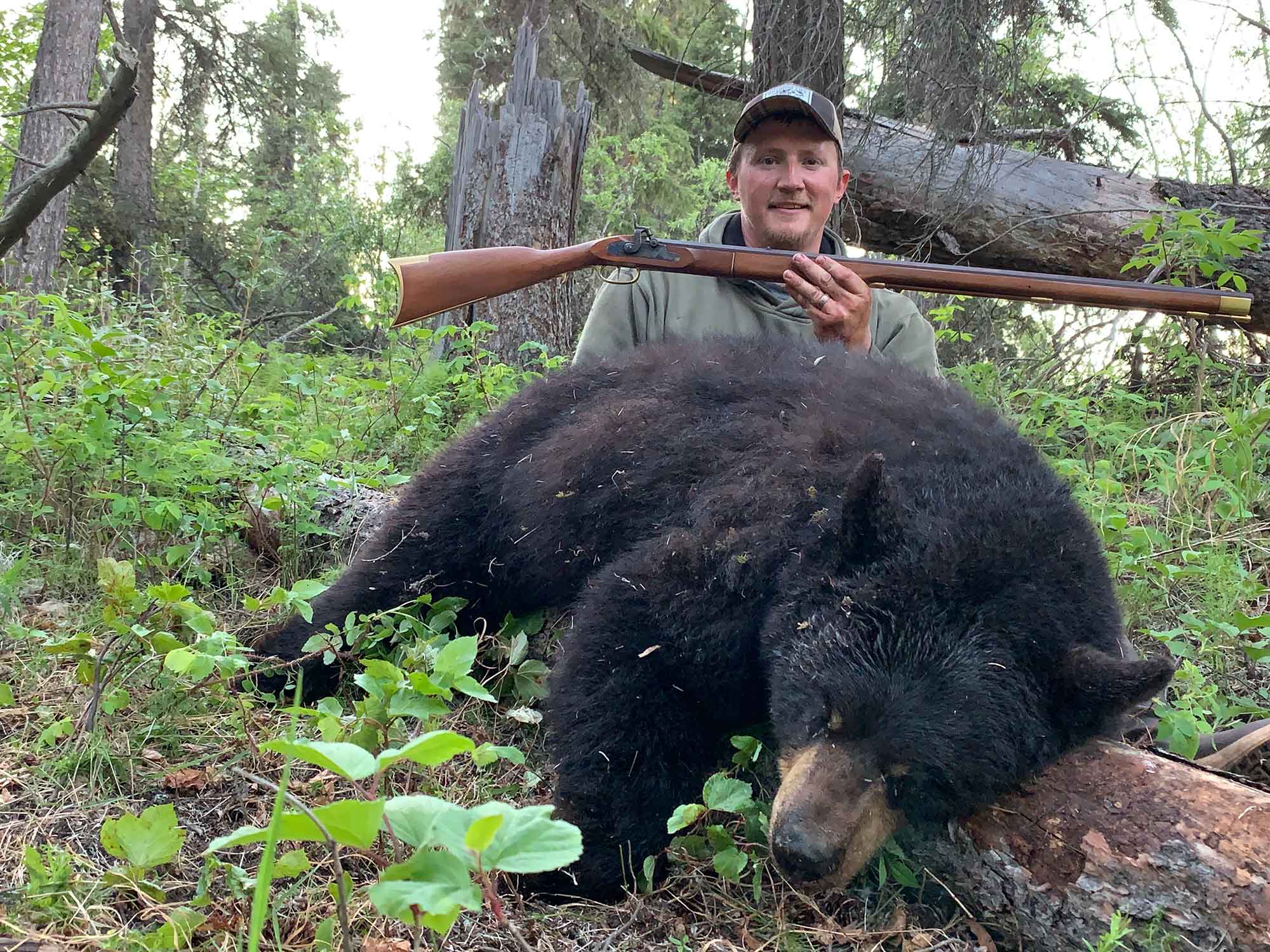
I was still in awe of what had just happened when I saw a second bear. It was stomping and huffing only 15 yards away. My primary goal for this hunt was to take a nice chocolate bear with a recurve and, now accomplished, I wanted to make a trip back to the boat to swap some equipment for the second bear. I had built a .50-caliber Kentucky rifle from a kit in early spring and was eager to test out some patched round balls on a boar. I climbed down from my stand, retrieved the muzzleloader, and had to run the bear off just to get back into the tree. After a few minutes that bear circled back around, quickly presenting me with a shot. All I saw were sparks and smoke filling the dead evening air. I listened carefully to pinpoint the last movement of that bear. The sour smell still lingered as I charged my rifle again. Initially, I planned on waiting for a third bear. But, I soon decided that I had generated enough work for myself for the night. I found both animals, snapped some quick photos, and dragged each of them to my boat using a repurposed snow sled.
The sweet smoke of a Clint Eastwood-sized cigarillo was both a rare celebratory treat and helped stave off the hordes of mosquitos as I tossed a few spoons for pike and enjoyed the stillness of the night at the mouth of a slough. I watched the midnight sun hang low over the horizon, taking a few moments to reflect on just how incredible this place was before motoring back to camp to skin the bears and get the meat bagged and cooled. Standing around a crackling driftwood fire, all of us shared our stories that night. Our worries about missing the bears had been misplaced. Terry killed his first bear with a bow, and Rob killed his first bear as well.
Boat Problems Won’t Stop This Hunt
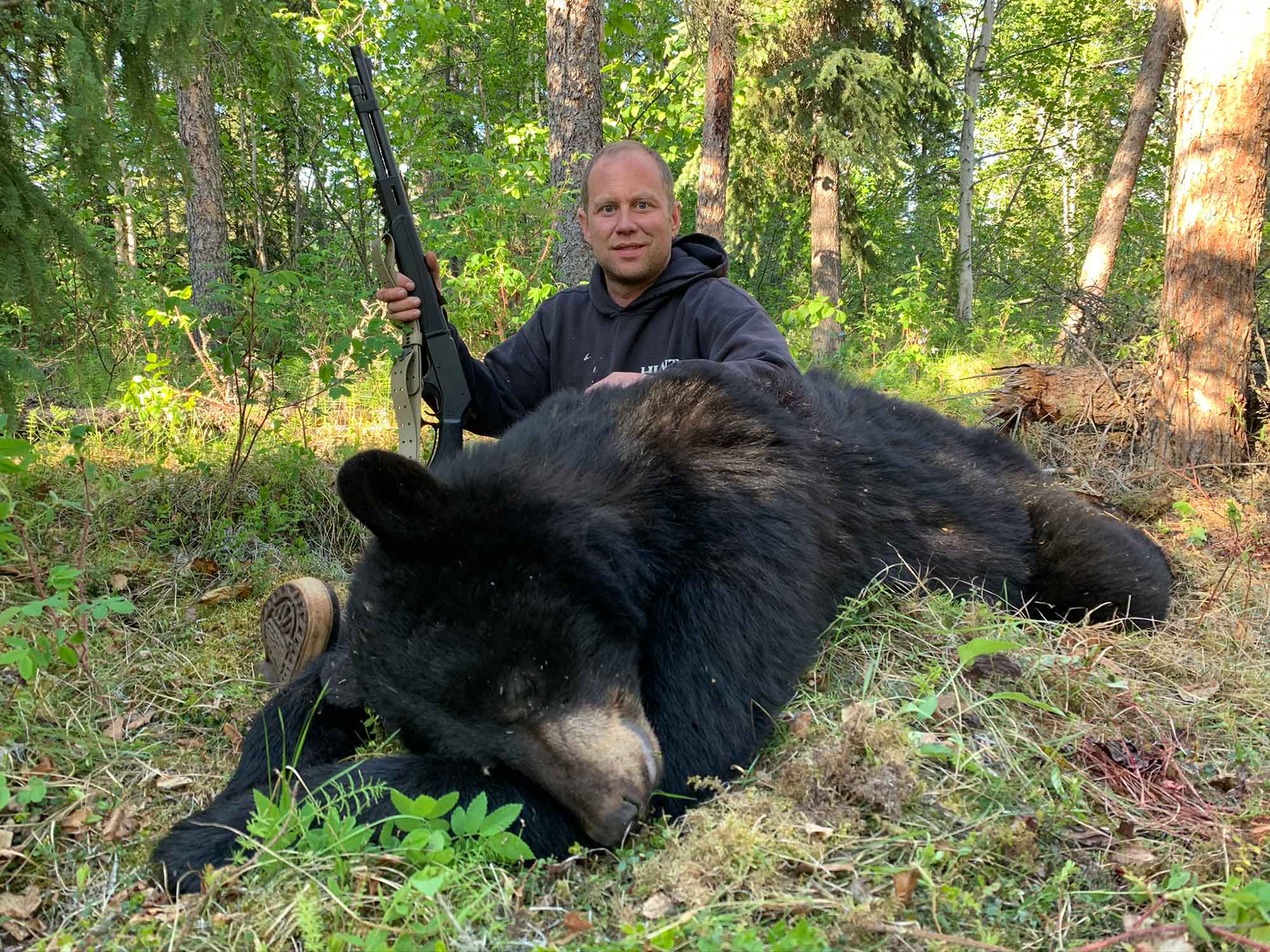
After the first night’s success, we let our meat and hides cool in the shade, and we were well on our way to sorting out a game plan for the second evening. Things changed, though, as my dad throttled his boat up to add bait to the site they planned on hunting. We could hear that his motor wasn’t running on all cylinders. Thankfully, Rob is a mechanic and he quickly diagnosed the issue as a bad ignition coil. The problem, however, was our remote location. Although the part would be easy to get in town, we were a long way from a boat shop. Using our Garmin InReach devices, we were able to find someone to buy the part, as well as a friend with a floatplane who could deliver it to us.
We decided to have Frank and Rob hunt the bait I had hunted for an evening, so the three of us set out in one boat in the early afternoon to do some fishing and move an additional treestand to that spot, preparing it for the evening. We caught some fish and were fairly casual and noisy in our approach to the bait. As Frank reached to climb the tree to start hanging the stand, I took a few steps towards the bait, noting that it had been disturbed since I last saw it. At that moment, a bear’s head popped up from behind the cribbing. It was a good bruin, but ran off quickly, though not too far.
”He’s still there, I can see him,” I said to Frank. “Get in that tree and we will leave and make some noise. He’ll come right back.”
I handed over my .45/70, then Rob and I hurried back to the boat and sat for a few minutes, swatting mosquitos. Bang! We heard the much-anticipated report of the rifle and a few minutes later, Frank returned to the boat, grinning. We hung the stand, loaded the bear, and had it skinned and the meat laid out to cool before dinner.
Our air-mail delivery man was dropping off the ignition coil the next morning, so we elected to spend the evening in camp and get to bed before 5 a.m. “We should have had him bring pizza,” we joked among ourselves. We were relieved when he set his floats down on the river to drop off that little box so we could get home the next evening.
A Lost Boar

Due to the remoteness and the warm temperatures in late May and early June, one of the challenges of this hunt was the short window we had to keep the meat and hides from spoiling. It would be nice to hunt for an entire week, but it’s unrealistic considering the limited amount of gear we were able to haul and our time constraints. Hides can be preserved indefinitely by fleshing and salting properly, but that takes lots of time, and you still have to care for the meat.
Three nights of hunting were about all we would be able to accomplish before spoilage set in. With that in mind, dad and Terry decided to hunt at midday on the bait that Frank and I had killed our bears over. It didn’t take long before another large boar showed. My dad shot him, his arrow hitting just low of where he was aiming. The bear flinched, then stood there as if nothing had happened. He shot again, and hit the same spot. The bear ran about 20 yards, spun, and fell over. After a minute or two, the bear got to its feet and walked off.
All of us quickly took up the blood trail, following it through an unbelievable network of bear trails littered with fresh sign. After almost a mile, the blood disappeared, leading us to the conclusion that he had hit the bear too low to strike the heart or lungs, something I have done and usually does not result in a fatal shot. Disappointed, we returned to camp and prepared for our last evening.
We returned to hunt the same spots we hunted the first night, and as I sat through those first restless minutes in the stand, I thought about the incredible amount of bear sign that we had seen back in the woods and wondered just how many bears were lurking, waiting for their opportunity to come to the bait. Even with what we had seen, I had my doubts about spotting any more bears that night because we had disturbed the area.
I had only been sitting for an hour and a half when I heard splashing, then sticks breaking. My eyes followed the sound until I caught a glimpse of black moving quietly through gaps in the tangled picture of spruce and alder limbs. I held pressure on the trigger of my Kentucky rifle as I drew back the hammer, allowing it to silently slip into the full-cock position. The bear climbed atop the cribbing and quartered away, reaching its head down behind a log. I raised the rifle, settled the front sight a few ribs back from the shoulder, and squeezed the brass trigger. The bear crumpled as the smoke billowed out of the muzzle and hung in the still air.
It seemed a sin to disturb the silence and stillness of the night, I thought, throttling my boat up onto step in the glass-smooth brackish water after loading up the last bear. As each of our boats arrived back at camp, many of us were grinning ear to ear, anticipating a chance to share stories and reflect on the experience over a beer, chilled with what little ice we had left. Frank used the muzzleloader he’s had since childhood to shoot another bear, and Rob shot one as well.
“He looked at me wrong,” my dad said in a jokingly boastful tone, just as I spotted the .45-caliber entrance wound between the eyes of the boar grizzly on the bow of the boat he just pulled up. He and Terry had been sitting in a makeshift ground blind when a pair of grizzlies stomped into the bait.
“We were going to use our bows, but I had the rifle ready, and when he locked onto us at about 10 yards, I gave him a warning shot between the eyes,” Dad said.
“Oh, then she started stomping and huffing at us and wouldn’t leave,” he said as I turned towards the other grizzly in the boat, “so I handed the rifle to Terry, and here we are.”
After getting all of the bears skinned and the meat taken care of, we stood around a small driftwood fire telling and retelling stories and in awe of just how amazing this place was, and how fortunate we were to be experiencing it. A person can only have so many “once-in-a-lifetime,” hunts and living in Alaska certainly has its advantages when it comes to that. But we all knew that this was both a trip to remember for years to come, and one that will be hard to repeat.





